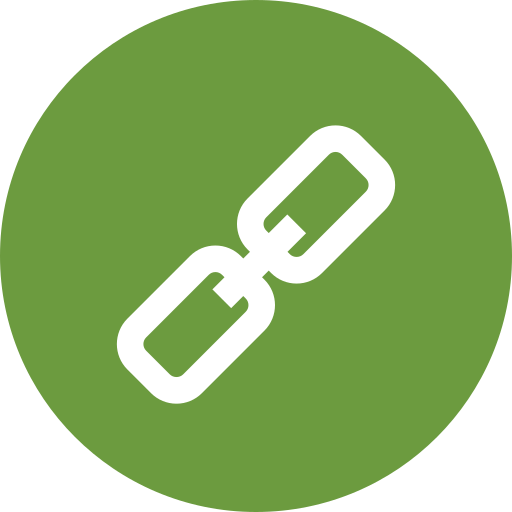| Product name | Per Pill | Savings | Per Pack | Order |
|---|---|---|---|---|
| 30 pills | $0.89 | $26.63 | ADD TO CART | |
| 60 pills | $0.70 | $11.33 | $53.26 $41.93 | ADD TO CART |
| 90 pills | $0.64 | $22.66 | $79.89 $57.23 | ADD TO CART |
| 120 pills | $0.60 | $33.99 | $106.52 $72.53 | ADD TO CART |
| 270 pills | $0.55 | $90.64 | $239.67 $149.03 | ADD TO CART |
| 360 pills | $0.54 | $124.63 | $319.57 $194.94 | ADD TO CART |
| Product name | Per Pill | Savings | Per Pack | Order |
|---|---|---|---|---|
| 60 pills | $0.47 | $28.08 | ADD TO CART | |
| 90 pills | $0.39 | $6.91 | $42.12 $35.21 | ADD TO CART |
| 120 pills | $0.35 | $13.82 | $56.16 $42.34 | ADD TO CART |
| 180 pills | $0.31 | $27.63 | $84.24 $56.61 | ADD TO CART |
| 270 pills | $0.29 | $48.35 | $126.36 $78.01 | ADD TO CART |
| 360 pills | $0.28 | $69.08 | $168.48 $99.40 | ADD TO CART |
Chloromycetin, also known as chloramphenicol, is a broad-spectrum antibiotic used to treat various bacterial infections. It is effective against a wide range of bacteria, including those that cause infections of the skin, respiratory tract, and urinary tract. In this article, we will provide an overview of Chloromycetin, its uses, benefits, and ordering options, including how to buy Chloromycetin in India and order genuine Chloromycetin online.
What is Chloromycetin?
Chloromycetin is a synthetic antibiotic that belongs to the class of phenicol antibiotics. It works by inhibiting the growth of bacteria, thereby preventing the spread of infection. Chloromycetin is available in various forms, including capsules, tablets, and injections. The most common dosages are Chloromycetin 500 mg and 250 mg.
Uses of Chloromycetin
Chloromycetin is used to treat a variety of bacterial infections, including:
- Skin and soft tissue infections
- Respiratory tract infections, such as pneumonia and bronchitis
- Urinary tract infections, such as cystitis and pyelonephritis
- Eye and ear infections
- Meningitis and other central nervous system infections
Benefits of Chloromycetin
Chloromycetin has several benefits, including:
- Broad-spectrum activity: Chloromycetin is effective against a wide range of bacteria, making it a useful treatment option for various infections.
- Fast action: Chloromycetin starts working quickly, providing rapid relief from symptoms.
- Low cost: Compared to other antibiotics, Chloromycetin is relatively inexpensive, making it a cost-effective treatment option.
Ordering Options
There are several ways to order Chloromycetin, including:
- Buy Chloromycetin online: You can purchase Chloromycetin from online pharmacies, which often offer discount Chloromycetin 500 mg and discount 250 mg Chloromycetin options.
- Buy Chloromycetin in India: Chloromycetin is widely available in India, and you can purchase it from local pharmacies or online retailers.
- Order genuine Chloromycetin online: Make sure to purchase Chloromycetin from a reputable online pharmacy to ensure that you receive genuine medication.
Table: Chloromycetin Dosages and Prices
| Dosage | Price |
|---|---|
| Chloromycetin 500 mg | $10 - $20 per capsule |
| 250 mg | $5 - $15 per capsule |
| Chloromycetin 500 mg fast delivery | $20 - $30 per capsule |
| Discount 250 mg Chloromycetin | $3 - $10 per capsule |
Precautions and Side Effects
While Chloromycetin is generally safe and effective, there are some precautions and side effects to be aware of:
- Allergic reactions: Some people may be allergic to Chloromycetin, which can cause symptoms such as rash, itching, and difficulty breathing.
- Bone marrow suppression: Chloromycetin can cause bone marrow suppression, which can lead to anemia, neutropenia, and thrombocytopenia.
- Gastrointestinal side effects: Chloromycetin can cause nausea, vomiting, and diarrhea.
List of Precautions
Here are some precautions to take when using Chloromycetin:
- Take the medication exactly as prescribed by your doctor.
- Do not take Chloromycetin if you are allergic to it or have a history of bone marrow suppression.
- Inform your doctor if you have any kidney or liver problems.
- Do not take Chloromycetin with other medications that can interact with it.
List of Benefits
Here are some benefits of using Chloromycetin:
- Effective against a wide range of bacteria.
- Fast action and rapid relief from symptoms.
- Low cost and affordable.
- Available in various forms, including capsules, tablets, and injections.
Conclusion
Chloromycetin is a useful antibiotic for treating various bacterial infections. With its broad-spectrum activity, fast action, and low cost, it is a popular treatment option. When ordering Chloromycetin, make sure to purchase from a reputable online pharmacy or local pharmacy, and follow the precautions and dosage instructions carefully. You can buy Chloromycetin 500 mg free shipping or buy Chloromycetin 250 mg with visa from online retailers, and take advantage of discount Chloromycetin 500 mg buy options. Remember to always consult with your doctor before taking any medication, and inform them of any allergies or medical conditions you may have.
Ordering Chloromycetin Online
If you are looking to order Chloromycetin online, here are some tips to keep in mind:
- Make sure to purchase from a reputable online pharmacy.
- Check the dosage and price of the medication.
- Look for discount Chloromycetin 500 mg and discount 250 mg Chloromycetin options.
- Ensure that the online pharmacy provides fast delivery and free shipping options.
- Always consult with your doctor before taking any medication.
By following these tips and precautions, you can safely and effectively use Chloromycetin to treat your bacterial infections. Remember to buy genuine Chloromycetin online and order Chloromycetin 250 mg with visa to ensure that you receive high-quality medication.
Infections are a common occurrence that can affect any part of the body, from the skin to the internal organs. They can be caused by a variety of microorganisms, including bacteria, viruses, fungi, and parasites. Infections can range from mild to severe, and in some cases, they can be life-threatening. In this article, we will explore the different types of infections that can occur in various parts of the body, their causes, symptoms, and prevention strategies.
Types of Infections
Infections can be classified into different types based on the part of the body affected. The following are some of the most common types of infections:
| Type of Infection | Part of the Body Affected | Common Causes |
|---|---|---|
| Skin Infections | Skin | Bacteria, viruses, fungi |
| Respiratory Infections | Lungs, airways | Viruses, bacteria, fungi |
| Urinary Tract Infections | Kidneys, bladder, urethra | Bacteria |
| Gastrointestinal Infections | Stomach, intestines | Bacteria, viruses, parasites |
| Eye Infections | Eyes | Bacteria, viruses, fungi |
| Ear Infections | Ears | Bacteria, viruses |
Skin Infections
Skin infections are one of the most common types of infections. They can be caused by a variety of microorganisms, including bacteria, viruses, and fungi. Some common types of skin infections include:
- Cellulitis: a bacterial infection that causes redness, swelling, and pain on the skin
- Impetigo: a bacterial infection that causes red sores on the skin
- Ringworm: a fungal infection that causes a ring-shaped rash on the skin
- Herpes simplex: a viral infection that causes cold sores or genital herpes
Symptoms of skin infections include redness, swelling, pain, and discharge. Treatment for skin infections usually involves antibiotics or antifungal medications.
Respiratory Infections
Respiratory infections affect the lungs and airways. They can be caused by viruses, bacteria, or fungi. Some common types of respiratory infections include:
- Pneumonia: a bacterial or viral infection that causes inflammation of the lungs
- Bronchitis: a bacterial or viral infection that causes inflammation of the airways
- Influenza: a viral infection that causes fever, cough, and body aches
- Tuberculosis: a bacterial infection that causes cough, fever, and weight loss
Symptoms of respiratory infections include cough, fever, shortness of breath, and chest pain. Treatment for respiratory infections usually involves antibiotics or antiviral medications.
Urinary Tract Infections
Urinary tract infections (UTIs) affect the kidneys, bladder, and urethra. They are usually caused by bacteria. Some common types of UTIs include:
- Cystitis: a bacterial infection that causes inflammation of the bladder
- Pyelonephritis: a bacterial infection that causes inflammation of the kidneys
- Urethritis: a bacterial infection that causes inflammation of the urethra
Symptoms of UTIs include pain while urinating, frequent urination, and abdominal pain. Treatment for UTIs usually involves antibiotics.
Gastrointestinal Infections
Gastrointestinal infections affect the stomach and intestines. They can be caused by bacteria, viruses, or parasites. Some common types of gastrointestinal infections include:
- Gastroenteritis: a viral or bacterial infection that causes diarrhea, vomiting, and abdominal pain
- Food poisoning: a bacterial or viral infection that causes diarrhea, vomiting, and abdominal pain
- Intestinal parasites: parasites that cause diarrhea, abdominal pain, and weight loss
Symptoms of gastrointestinal infections include diarrhea, vomiting, abdominal pain, and fever. Treatment for gastrointestinal infections usually involves antibiotics or antiparasitic medications.
Eye Infections
Eye infections affect the eyes and can be caused by bacteria, viruses, or fungi. Some common types of eye infections include:
- Conjunctivitis: a bacterial or viral infection that causes redness, itching, and discharge in the eyes
- Keratitis: a bacterial or fungal infection that causes inflammation of the cornea
- Endophthalmitis: a bacterial or fungal infection that causes inflammation of the inner eye
Symptoms of eye infections include redness, itching, discharge, and vision loss. Treatment for eye infections usually involves antibiotics or antifungal medications.
Ear Infections
Ear infections affect the ears and can be caused by bacteria or viruses. Some common types of ear infections include:
- Otitis media: a bacterial or viral infection that causes inflammation of the middle ear
- Otitis externa: a bacterial or fungal infection that causes inflammation of the outer ear
- Mastoiditis: a bacterial infection that causes inflammation of the mastoid bone
Symptoms of ear infections include ear pain, fever, and hearing loss. Treatment for ear infections usually involves antibiotics or antifungal medications.
Prevention Strategies
Preventing infections requires a combination of good hygiene practices, a healthy lifestyle, and immunizations. Here are some prevention strategies to reduce the risk of infections:
- Practice good hygiene: wash your hands frequently, especially after using the bathroom and before eating
- Get vaccinated: get vaccinated against common infections such as influenza, pneumonia, and HPV
- Use protective gear: use protective gear such as gloves, masks, and eye protection when engaging in activities that increase the risk of infection
- Avoid close contact: avoid close contact with people who have infections
- Stay healthy: maintain a healthy lifestyle by eating a balanced diet, exercising regularly, and getting enough sleep
Complications of Infections
Infections can lead to serious complications if left untreated or if treatment is delayed. Some common complications of infections include:
- Sepsis: a life-threatening condition that occurs when the body's response to an infection becomes uncontrolled
- Organ failure: infections can cause organ failure, such as kidney or liver failure
- Death: infections can be fatal if left untreated or if treatment is delayed
Conclusion
Infections can occur in any part of the body and can be caused by a variety of microorganisms. Understanding the risks and prevention strategies can help reduce the risk of infections. Practicing good hygiene, getting vaccinated, and maintaining a healthy lifestyle can help prevent infections. If you suspect you have an infection, seek medical attention promptly to prevent complications and promote recovery.
Here are some key takeaways to remember:
- Infections can occur in any part of the body
- Good hygiene practices, such as washing your hands frequently, can help prevent infections
- Vaccinations can help prevent common infections
- Maintaining a healthy lifestyle, such as eating a balanced diet and exercising regularly, can help prevent infections
- Seek medical attention promptly if you suspect you have an infection
By following these prevention strategies and seeking medical attention promptly, you can reduce the risk of infections and promote overall health and well-being.
























